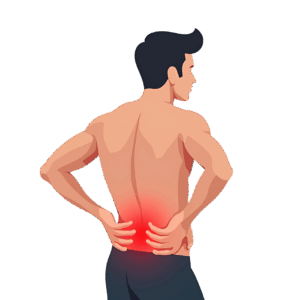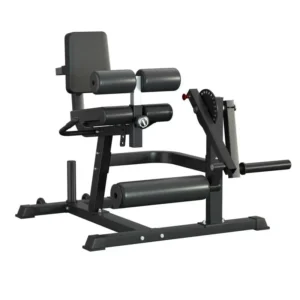DuBois, PA / Syndication Cloud / August 13, 2025 / Highroad Enterprises

Key Takeaways
- Chronic pain affects 50 million Americans, with holistic approaches offering fewer side effects than traditional pain medications.
- Research shows that massage therapy, spinal manipulation, and acupuncture can provide 3-5 months of pain relief with proper treatment schedules.
- Mind-body practices like yoga and meditation change pain perception by addressing the nervous system’s heightened response to chronic pain.
- The most effective holistic pain management combines multiple approaches tailored to your specific pain condition.
- Modern technology is now enhancing traditional holistic approaches, creating promising new avenues for pain relief.
Chronic Pain’s Hidden Impact: Why Traditional Treatments Often Fall Short
Living with chronic pain isn’t just about the physical sensation—it’s an invisible force that reshapes your entire experience of life. For the 50 million Americans battling chronic pain, the traditional medical approach often starts and ends with medication. But there’s a hidden cost to this narrow strategy.
Traditional pain medications, while sometimes necessary, come with significant drawbacks. NSAIDs can damage your stomach, liver, and kidneys with long-term use. Opioids carry risks of dependence and addiction, while often becoming less effective over time. Even steroid injections, helpful for acute inflammation, can weaken tissues with repeated use.
What makes chronic pain particularly challenging is its connection to your brain and nervous system. When pain persists, it continuously sends stress signals to your brain, creating a heightened perception of both pain and threat. This creates a vicious cycle where pain increases stress, which in turn amplifies pain..
The Science Behind Holistic Pain Management: What Research Shows
The Mind-Body Connection in Chronic Pain
The science of pain has undergone significant advancements in recent years. We now understand that chronic pain isn’t simply a physical sensation but a complex experience influenced by biological, psychological, and social factors. Your brain processes pain signals through emotional filters, meaning your thoughts, feelings, and past experiences all shape how intensely you feel pain.
This understanding explains why stress, anxiety, and depression often accompany—and worsen—chronic pain conditions. When your nervous system remains in a heightened state of alert, it becomes more sensitive to pain signals, amplifying your discomfort.
Comparing Holistic Approaches to Conventional Treatments
While conventional pain treatments focus primarily on symptom suppression, holistic approaches aim to address the underlying causes of pain. Research consistently shows that integrative therapies produce fewer adverse effects than traditional pain medications. This makes them particularly valuable for long-term management, where medication side effects often accumulate over time and can lead to serious complications like organ damage.
In direct clinical comparisons, some holistic approaches have demonstrated impressive results. For example, studies reveal that spinal manipulation therapy achieved a 75% improvement in chronic low back pain patients compared to just 25% improvement with conventional physiotherapy. These findings challenge the outdated notion that holistic approaches lack scientific backing.
Patient-Centered vs. Medication-Only Approaches
The fundamental difference between holistic and conventional pain management lies in their underlying philosophy. Integrative medicine is inherently patient-centered, treating the whole person rather than just targeting the pain. This approach addresses physical symptoms while also considering emotional well-being, lifestyle factors, and spiritual needs—creating a comprehensive healing experience.
A patient-centered approach recognizes that each person’s pain experience is unique. Rather than applying the same medication protocol to everyone with similar symptoms, holistic practitioners develop individualized treatment plans that often combine multiple complementary therapies for maximum benefit.
Massage Therapy: Proven Techniques for Pain Relief
Optimal Treatment Schedules: 60-Minute Sessions 2-3 Times Weekly
Massage therapy is more than just a luxury spa treatment—it’s a scientifically validated approach for chronic pain management. Clinical trials have identified specific dosing parameters that optimize pain relief. The evidence points to 60-minute massage sessions performed 2-3 times weekly as providing significantly better results than shorter or less frequent sessions.
In one randomized clinical trial examining neck pain, participants receiving 60-minute massages twice weekly experienced meaningful improvements in both pain intensity and functional ability. These weren’t just minor changes—patients reported clinically significant reductions in disability and pain that persisted for weeks after treatment ended.
Types of Massage Most Effective for Different Pain Conditions
Different massage techniques target different types of pain. For chronic low back pain, deep tissue and myofascial techniques show particular promise by addressing the fascia (connective tissue) restrictions that often contribute to persistent pain. For post-surgical pain, such as after breast cancer surgery, specialized myofascial massage techniques have demonstrated significant benefits for both pain reduction and mobility improvement.
For fibromyalgia and widespread pain conditions, Swedish massage with moderate pressure appears most beneficial, likely because it increases circulation without triggering pain hypersensitivity. The key is matching the technique to your specific condition and pain sensitivity level.
Duration of Benefits: Understanding the 3-5 Month Window
Massage therapy’s effects aren’t permanent, but they’re not fleeting either. Research consistently shows that properly administered massage therapy provides pain relief lasting approximately 3-5 months across various chronic pain conditions. This consistent timeframe appears in multiple clinical studies.
Importantly, “booster” sessions can extend these benefits. Studies demonstrate that periodic maintenance massages following an initial intensive treatment period help sustain pain relief over longer periods. This suggests that massage should be viewed as an ongoing component of pain management rather than a one-time intervention.
Manipulative Therapies: Realigning the Body’s Structure
Osteopathic Manipulative Treatment (OMT) Mechanisms
Osteopathic Manipulative Treatment works by addressing mechanical pain sources—including muscle imbalances, joint restrictions, and fascial tensions. OMT practitioners use their hands to apply precise forces to specific body areas, improving structural alignment and tissue mobility.
The mechanisms behind OMT’s effectiveness are multifaceted. When joints are mobilized, mechanoreceptors are stimulated, which can interrupt pain signaling through the “gate control” mechanism. Additionally, OMT improves circulation to tissues, reduces inflammatory mediators, and optimizes nervous system function by reducing sympathetic (stress) tone.
Spinal Manipulation: 75% Improvement vs. 25% with Conventional Therapy
Spinal manipulation therapy (SMT) has demonstrated remarkable effectiveness for certain pain conditions, particularly low back pain. In controlled studies comparing treatment approaches, SMT provided a 75% improvement in pain and function compared to just 25% improvement with conventional physiotherapy approaches like exercise and transcutaneous electrical nerve stimulation.
Research also indicates that the benefits of spinal manipulation are dose-dependent. Studies suggest that 12 sessions over six weeks represent an optimal dosage for chronic low back pain, producing substantial improvements in both pain intensity and functional disability that persist for up to 52 weeks after treatment.
Acupuncture: Ancient Wisdom Meets Modern Science
Traditional Needling vs. Modern Techniques
Acupuncture has grown significantly since its origins in ancient China. Traditional acupuncture involves inserting thin needles at specific points along the body’s meridians—pathways through which vital energy (qi) flows. Practitioners then gently manipulate these needles to stimulate energy flow and restore balance.
Modern acupuncture has expanded beyond these traditional approaches. While classical needling remains widely practiced, contemporary specialists often incorporate advanced techniques like electroacupuncture, which delivers mild electrical stimulation through the needles, or laser acupuncture, which uses low-level laser therapy on acupuncture points without breaking the skin.
Electroacupuncture and Laser Applications for Enhanced Relief
These technological innovations have significantly expanded acupuncture’s therapeutic potential. Electroacupuncture amplifies traditional needle treatments by adding precisely calibrated electrical currents, which research shows to be particularly effective for nerve-related pain conditions. Studies consistently demonstrate that electroacupuncture provides powerful anti-inflammatory effects and modulates neural pathways involved in pain perception.
Laser acupuncture offers a completely non-invasive alternative that works well for patients with needle phobias or bleeding disorders. Clinical trials have shown that laser acupuncture delivers anti-inflammatory benefits similar to traditional needling. For conditions like knee osteoarthritis, combining laser and electroacupuncture techniques has demonstrated significant pain reduction through both inflammatory modulation and direct neurological effects.
Which Pain Conditions Respond Best to Acupuncture
Not all pain conditions respond equally to acupuncture. Systematic reviews identify it as particularly beneficial for chronic low back pain, neck pain, osteoarthritis, headaches, and shoulder pain. For these specific conditions, acupuncture consistently outperforms both no treatment and sham (placebo) acupuncture in controlled studies.
The pain relief typically lasts 3-5 months after treatment completion, similar to the duration seen with massage therapy. Some conditions respond better to specific acupuncture variants—electroacupuncture shows superior results for neuropathic pain, while traditional needling may be optimal for musculoskeletal conditions.
StemWave Therapy: Harnessing Sound Waves for Natural Healing
StemWave therapy offers an innovative approach that bridges ancient healing principles with modern technology. This non-invasive treatment uses focused acoustic waves—similar to sound waves—to stimulate your body’s natural healing responses.
The technology works through mechanotransduction, which is your body’s way of converting mechanical energy into cellular responses. Think of it like a gentle wake-up call to sleeping cells. When the focused waves penetrate deep into tissue layers, they activate connective tissue and temporarily increase blood circulation in the treated area.
What makes StemWave particularly appealing for holistic pain management is its drug-free nature and minimal time commitment. Treatments typically take just 3-8 minutes with no recovery time needed, making it easy to combine with other therapies like massage or acupuncture. By stimulating your body’s own repair mechanisms rather than masking symptoms, StemWave aligns perfectly with the holistic philosophy of addressing root causes rather than just managing pain.
Implementing Holistic Pain Management: A Practical Approach
1. Assessment: Identifying Your Specific Pain Patterns
Effective holistic pain management begins with understanding your unique pain experience. Keep a detailed pain journal for at least two weeks, noting intensity, duration, triggers, and alleviating factors. Pay attention to connections between your pain and sleep quality, stress levels, physical activity, and emotional states.
Seek healthcare providers who take time to listen and understand your complete health picture. The best practitioners will ask about lifestyle factors, emotional well-being, and your personal goals—not just your pain symptoms. This comprehensive assessment creates the foundation for truly personalized treatment.
2. Integration: Combining Therapies for Maximum Benefit
Rather than relying on a single approach, research suggests combining complementary therapies yields better results. For example, massage therapy might reduce muscle tension that’s limiting your ability to perform therapeutic yoga poses. Similarly, mindfulness meditation may enhance your response to acupuncture by reducing treatment anxiety.
Develop a multi-modal treatment plan that addresses different aspects of your pain. Consider how physical interventions like massage or acupuncture can work alongside mind-body approaches like yoga or meditation for a truly comprehensive strategy.
3. Consistency: Creating a Sustainable Treatment Schedule
Holistic pain management requires commitment. Based on clinical research, develop a treatment schedule with sufficient “dosing” of each therapy. For massage, this might mean 60-minute sessions 2-3 times weekly during intensive treatment phases. For yoga or mindfulness, daily practice of even 10-15 minutes proves more beneficial than longer but inconsistent sessions.
Be realistic about what you can maintain long-term. Create a schedule that works with your life and resources, perhaps focusing on professional treatments during pain flares while maintaining daily self-care practices.
4. Monitoring: Tracking Progress and Adjusting Approaches
Regularly assess how each component of your pain management plan is working. Use simple pain scales, function assessments, and quality of life measures to track changes objectively. Notice which approaches provide immediate relief versus those that build cumulative benefits over time.
Be prepared to adjust your strategy based on this monitoring. What works during one phase of your pain journey may become less effective as your condition changes, requiring modifications to maintain relief.
5. Partnership: Working with Healthcare Providers
Effective holistic pain management doesn’t mean abandoning conventional healthcare. Seek providers who support an integrative approach and are willing to coordinate with your other practitioners. Share information about your holistic practices with all providers to ensure safe integration with any medications or conventional treatments you’re receiving.
Consider working with an integrative medicine physician who can help coordinate your overall treatment plan. These specialists have the training to combine evidence-based conventional medicine with complementary approaches for truly comprehensive care.
Beyond Pain Relief: The Whole-Person Benefits of a Holistic Approach
The benefits of holistic pain management extend far beyond pain reduction. Patients regularly report improved sleep quality, increased energy, better mood, reduced anxiety, and a greater sense of control over their health. Many discover that practices initially adopted for pain relief become valuable tools for overall well-being and stress management.
Perhaps most importantly, holistic approaches empower you to participate actively in your healing journey rather than passively receiving treatment. This shift from patient to participant can transform your relationship with chronic pain, reducing its dominance in your life even when the sensation itself persists.
Managing chronic pain is undeniably challenging, but integrative approaches offer promising paths forward with fewer risks than many conventional treatments. By combining ancient healing wisdom with modern scientific validation, holistic pain management opens new possibilities for living well despite persistent pain.
Mercy Family Health offers StemWave therapy, an innovative technology that can complement these holistic approaches to create a comprehensive pain management strategy tailored to your unique needs.
Highroad Enterprises
531 Delarme Road
DuBois
PA
15801
United States






















